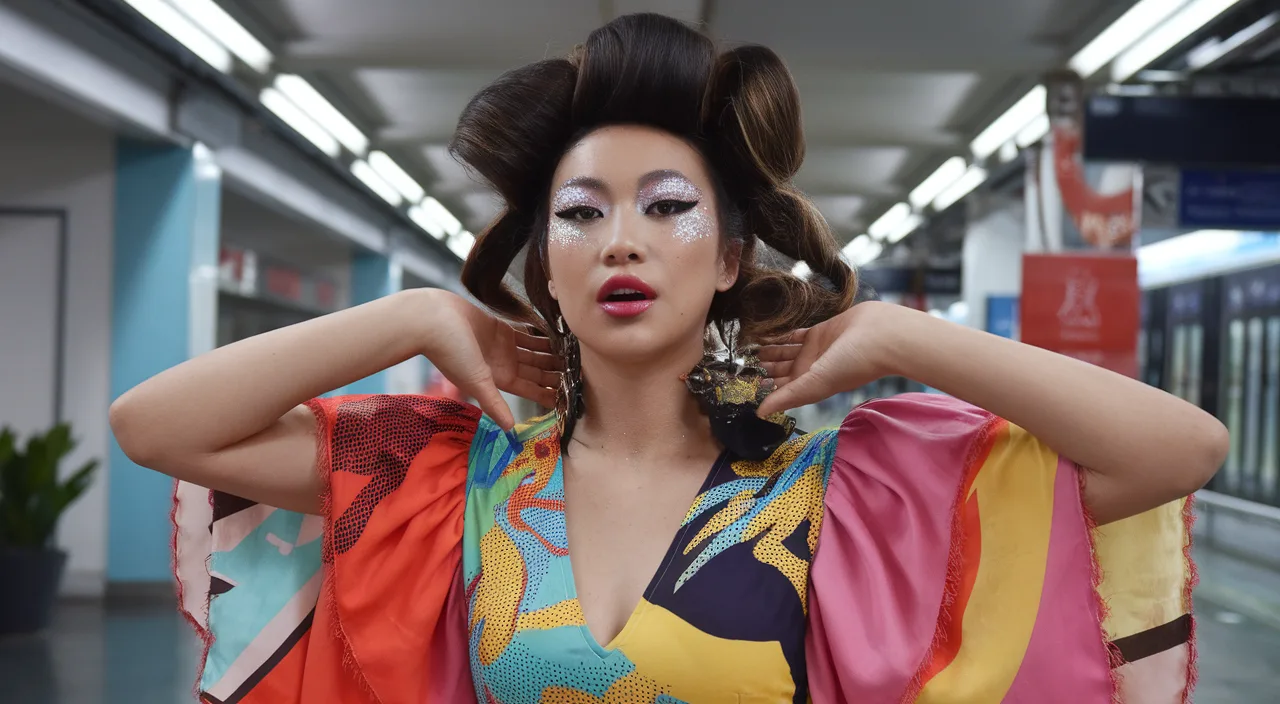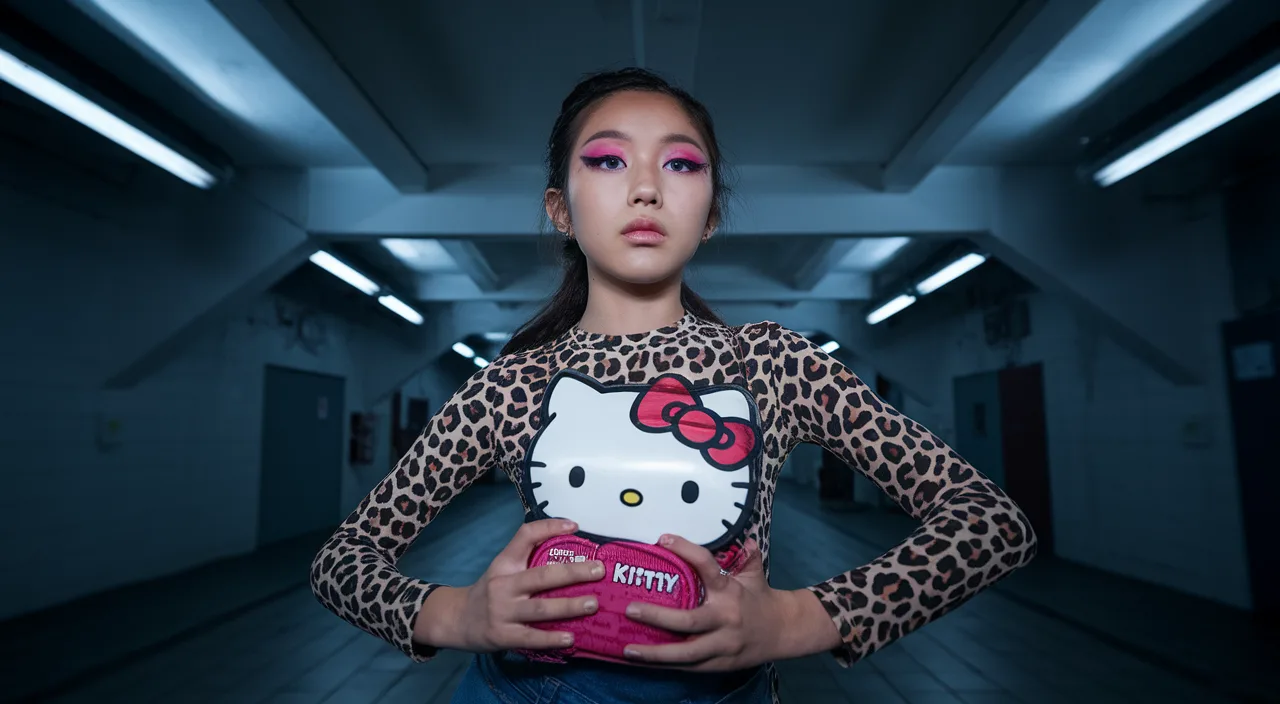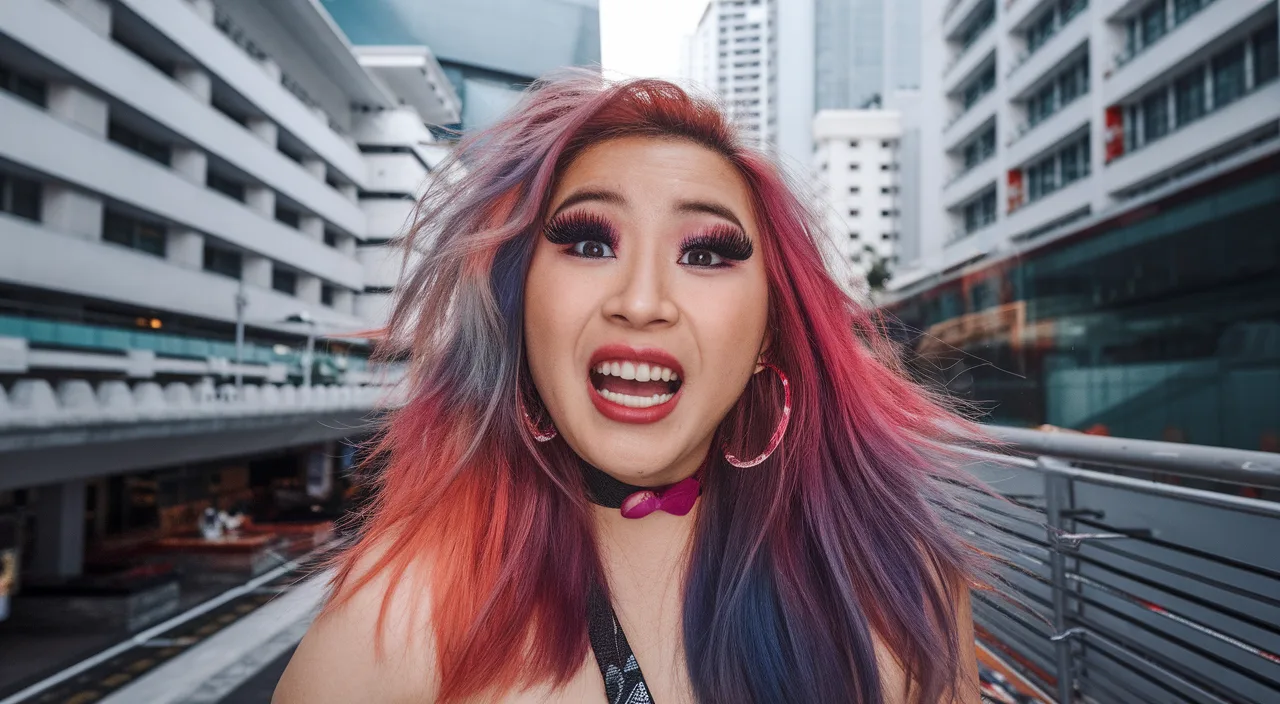So… What Is Ah Lian, and Why Are We Still Talking About Her?
Simple answer: Because she’s iconic. Love her or roll your eyes at her, the Ah Lian is here to stay—and she’s taken root in everything from MRT conversations to TikTok feeds, and even Singaporean fashion runways. This quintessential figure represents more than just Singlish slang—she embodies a cultural movement that continues to influence Singapore’s youth identity.
TL;DR — What You Need to Know
- Ah Lian: A Singaporean slang term often used to describe loud, flashy, and fearless girls who embrace Singlish, heavy makeup, and bold fashion habits.
- Origins: The term is rooted in a mix of Hokkien influence and early Singaporean teenage subcultures.
- Not just stereotypes: Ah Lians are more complex than just their clothing or speech—they reflect confidence, defiance, and a distinct cultural identity.
- In fashion: From neon hair to fluffy slippers, Lian fashion evolves while keeping that unmistakable flair.
- Why we still care: Because Ah Lians have carved out a place in Singapore’s identity, especially for Millennials and Gen Z who grew up knowing one—or being one.
Who is Ah Lian?
Ah Lian isn’t just that girl shouting on her phone at the MRT station or fighting with her boyfriend outside a bubble tea shop. She’s a whole cultural archetype that defines Singaporean youth culture. A vibe, even.
Typically portrayed as a local teenage girl with bleached or dyed hair, dramatic eyeliner so sharp it could cut glass, and some Singlish expressions thrown around like confetti—Ah Lian is loud, proud, and doesn’t care about your judging eyes. Born from late-night chats at void decks and defiant stances against boring school rules, the Ah Lian represents a bold phase of Singaporean culture many know, even if they won’t admit they once backcombed their fringe that high.
But let’s be real—it’s also a stereotype, and like most stereotypes, it says more about societal anxieties than the people it labels. The Ah Lian phenomenon reflects Singapore’s complex relationship with authenticity versus conformity. More on that later.
Origin and Evolution of the Ah Lian Term
The phrase “Ah Lian” likely comes from “Lian,” a common female Chinese name in dialect. Combined with the “Ah” prefix (a common local way to address folks informally), it became a way to generalize flashy, unapologetically loud girls—usually working-class Chinese teens who spoke in Singlish or Hokkien back in the day. Think early 2000s Hougang Mall, silver flip phones, and velour tracksuits with rhinestones spelling out ‘JUICY.’
While the term used to be derogatory—often implying low-class status, obnoxious values, or just bad taste—it has slowly morphed into something more layered. In recent years, Ah Lian has become a symbol of defiance against Western beauty standards, textbook etiquette, and cookie-cutter influencer aesthetics. This evolution mirrors how Singlish itself transformed from stigmatized dialect to celebrated cultural marker.
Where once ‘Ah Lian’ would get you side-eyed by teachers or dissed by your cousins, now it might win you TikTok fame. The relationship between Ah Lian and Ah Beng culture also strengthened this transformation, creating a unified front of authentic Singaporean expression. Redemption arc much?
Debunking Stereotypes: Embracing Ah Lian Culture
The Ah Lian image has been unfairly dragged for years—branded as uneducated, rude, vulgar, or shallow. But let’s break it down. Behind that leopard-print tube top or exaggerated mascara is often a girl who’s unafraid to speak her truth. She’s expressive, confident, and unwilling to keep quiet just because it’s “ladylike” to do so.
Here’s what society forgot: Ah Lians defended their individuality way before ‘being authentic’ became an Instagram trend. They chose boldness over beige, and hello—some of their looks are now mainstream Singaporean fashion. Style aside, a lot of these so-called “heartbroken” Lians grew up into resilient women, business owners, creators, and yes, even government scholars. Lian today, leader tomorrow.
The Ah Lian stereotype also ignores the cultural significance of Singlish expression and community bonding. These women created their own language of belonging, their own fashion codes, and their own rules for being authentically Singaporean. So let’s stop using “Ah Lian” as an insult. If anything, we should admire how Ah Lian challenged the idea of what it means to be a “good girl” in Singaporean society.
Ah Lian Fashion Trends in Singapore
The fashion game is hella strong in the Lian universe. And no, it’s not just pink spaghetti straps and furry flip-flops (although those still slap, okay?). Like the Queen of Rebellion she is, Ah Lian’s wardrobe never shies away from loud colours, bold labels, or daring choices that define modern Singaporean street style.
These are some of the classic and evolving Ah Lian fashion signatures that continue to influence Singapore fashion:
- Hair colours that defy MOE rules: Think magenta, electric blue, ash grey, with roots fully showing. Fringes curled sky-high like they’re kissing the heavens.
- Faux lashes and liner: Drawn so long and sharp, can use as weapon if kena robbed.
- PJs as daywear: Hello Kitty baggy pants with matching slippers? Iconic Singapore fashion statement.
- Leopard print anything: Okay la, most iconic. From clutches to crop tops, leopard print remains the ultimate Ah Lian signature.
- Chunky accessories: Oversized gold hoops, blinged-out phone cases, and Hello Kitty everything that screams confidence.
And let’s not forget how Ah Lian fashion infiltrated IG and TikTok aesthetics. Those 90’s baby tees and ultra-baggy carpenter jeans? Ah Lian did it first. Today’s Singaporean fashion influencers often draw inspiration from these original trendsetters, proving that Ah Lian style was ahead of its time.
Ah Lian in Pop Culture and Social Media
Ah Lians have graced Singaporean TV, YouTube sketches, underground forums (hello STOMP?), and now reign supreme on social media platforms. Whether it’s a comedic character in a web series or a TikTok influencer proudly reclaiming the label, Ah Lian energy remains unmatched in Singaporean pop culture.
In fact, many influencers today borrow elements of Lian culture without even realizing it. The OTT poses, the aesthetic edits, the ‘don’t care what others say’ captions—those were Lian MO before hashtags were even a thing. The influence extends beyond fashion into Singlish expression, attitude, and authentic self-presentation that resonates with younger Singaporeans.
But there’s also a deeper shift here: younger Singaporeans are unlearning the social shame around being ‘ah lian.’ Increasingly, they see her as a piece of local heritage—a character who’s streetwise, bold, and a little chaotic in the best way. This cultural reclamation mirrors how Ah Beng culture also gained acceptance, creating space for authentic Singaporean identity expression.
Conclusion: The Enduring Charm of Ah Lian Culture
Ah Lian isn’t going anywhere—in fact, she’s more relevant than ever in Singapore’s cultural landscape. She reminds us that culture isn’t just formed in Raffles Place boardrooms or Parliament buildings. Sometimes it begins in void decks, hawker centres, or MRT stations, where real people live real lives—and talk real loud in authentic Singlish.
The Ah Lian phenomenon represents something deeper about Singaporean identity: the tension between conformity and authenticity, between “proper” behavior and genuine self-expression. In a society that often prizes politeness and restraint, Ah Lian culture offers an alternative narrative of what it means to be confidently Singaporean.
So the next time you see someone rockin’ purple bangs or yelling “Alamak lah, ai siah!” at Pasir Ris interchange, don’t roll your eyes. That’s history walking by you—probably in furry sandals, definitely with attitude, and absolutely representing a slice of authentic Singapore culture that refuses to be silenced.
To all the Ah Lians out there: Thank you for speaking up when others told you to stay quiet, for embracing a loudness that the world still hasn’t learned how to deal with, and for keeping it unapologetically real in your own uniquely Singaporean way.
Frequently Asked Questions
- What does ‘Ah Lian’ mean in Singapore?
‘Ah Lian’ is a Singlish slang term used to describe a bold, expressive, and often flashy young woman in Singapore, usually Chinese and fluent in Singlish or dialect. - Is being called Ah Lian offensive?
Depends! It was initially an insult, but younger generations have started reclaiming the term as a badge of identity or endearment within Singaporean culture. - What’s the difference between Ah Lian and Ah Beng?
Ah Lian is the female version of this cultural archetype. Ah Bengs are the male counterparts, often sharing similar traits—loud fashion, Singlish expression, and unique charm. - Do people still use the word Ah Lian?
Yes, especially among Millennials and Gen Z, either as parody, personal identity, or social commentary about authentic Singaporean culture. - Can you be an ‘Ah Lian’ and still be fashionable?
Absolutely. In fact, some Ah Lian fashion staples are now legit streetwear trends in Singapore. Fashion is cyclic—and Lian style is proof that authenticity never goes out of style. - Where is the best place to spot Ah Lian culture today?
Social media (TikTok, IG), secondary school archives (lol), and certain malls still carry the spirit. But mostly, the Lian attitude lives in everyday Singlish speech and fashion choices. - Why is Ah Lian important in Singaporean culture?
Because she represents a slice of our socio-cultural evolution—defiance, self-expression, and the constant tension between ‘proper’ and ‘authentic’ in Singaporean society. She’s part of what makes Singapore’s cultural identity unique.



